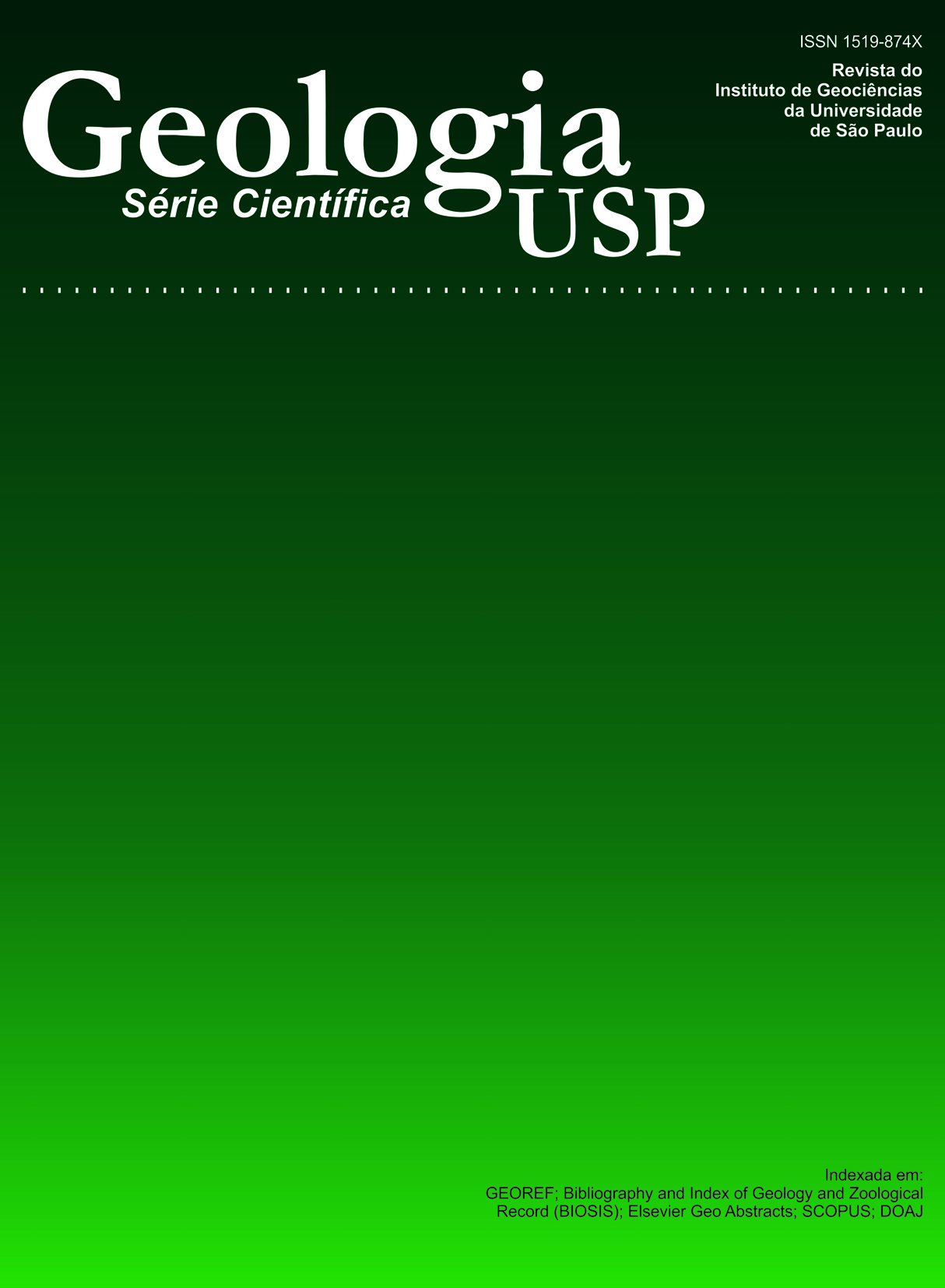Ground penetrating radar digital imaging of a collapsed paleocaves
DOI:
https://doi.org/10.5327/Z1519-874X2012000300005Keywords:
Collapsed paleocave, Ground penetrating radar, Analog outcrop, Digital solid modelAbstract
In this paper we present the methodological procedures for digital imaging of collapsed paleocaves in carbonate tufas using ground penetrating radar (GPR). These carbonate deposits occur in the Quixeré region, Ceará State (NE Brazil), on the western border of the Potiguar Basin. Collapsed paleocaves are exposed along a state road, which were selected to this study. We chose a portion of the called Quixeré outcrop for making a photomosaic and caring out a GPR test section to compare and parameterize the karst geometries on the geophysics line. The results were satisfactory and led to the adoption of criteria for the interpretation of others GPR sections acquired in the region of the Quixeré outcrop. Two grids of GPR lines were acquired; the first one was wider and more spaced and guided the location of the second grid, denser and located in the southern part of the outcrop. The radargrams of the second grid reveal satisfactorily the collapsed paleocaves geometries. For each grid has been developed a digital solid model of the Quixeré outcrop. The first model allows the recognition of the general distribution and location of collapsed paleocaves in tufa deposits, while the second more detailed digital model provides not only the 3D individualization of the major paleocaves, but also the estimation of their respective volumes. The digital solid models are presented here as a new frontier in the study of analog outcrops to reservoirs (for groundwater and hydrocarbon), in which the volumetric parameterization and characterization of geological bodies become essential for composing the databases, which together with petrophysical properties information, are used in more realistic computer simulations for sedimentary reservoirs.Downloads
Download data is not yet available.
Downloads
Published
2012-12-01
Issue
Section
Articles
License
Authors who publish in this journal shall comply with the following terms:
- Authors keep their copyright and grant to Geologia USP: Série Científica the right of first publication, with the paper under the Creative Commons BY-NC-SA license (summary of the license: https://creativecommons.org/licenses/by-nc-sa/4.0 | full text of the license: https://creativecommons.org/licenses/by-nc-sa/4.0/legalcode) that allows the non-commercial sharing of the paper and granting the proper copyrights of the first publication in this journal.
- Authors are authorized to take additional contracts separately, for non-exclusive distribution of the version of the paper published in this journal (publish in institutional repository or as a book chapter), granting the proper copyrights of first publication in this journal.
- Authors are allowed and encouraged to publish and distribute their paper online (in institutional repositories or their personal page) at any point before or during the editorial process, since this can generate productive changes as well as increase the impact and citation of the published paper (See The effect of Open Access and downloads on citation impact).
How to Cite
Jesus, T. E. S. de, Reis Júnior, J. A. dos, Castro, D. L. de, & Lima-Filho, F. P. (2012). Ground penetrating radar digital imaging of a collapsed paleocaves . Geologia USP. Série Científica, 12(3), 71-84. https://doi.org/10.5327/Z1519-874X2012000300005





